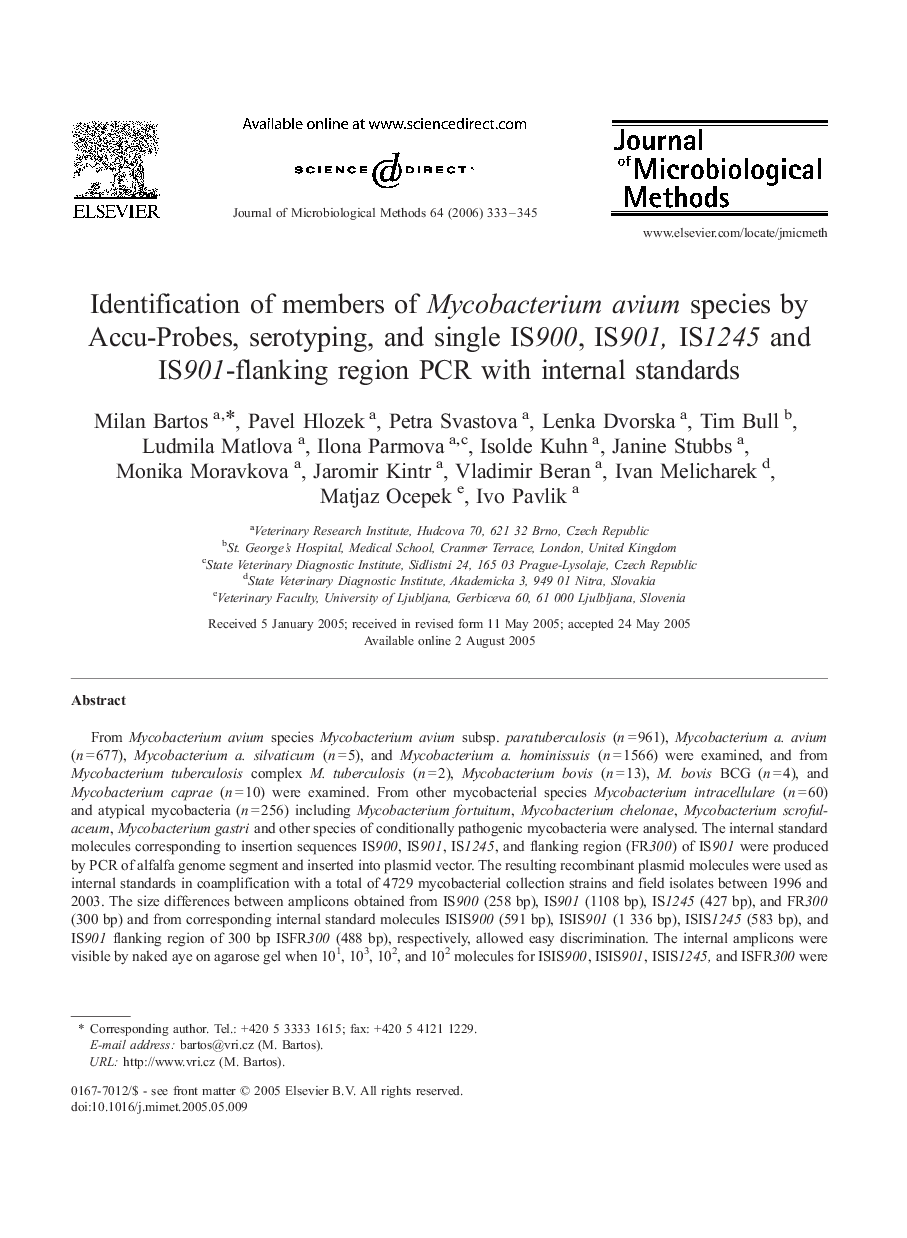| Article ID | Journal | Published Year | Pages | File Type |
|---|---|---|---|---|
| 2091350 | Journal of Microbiological Methods | 2006 | 13 Pages |
From Mycobacterium avium species Mycobacterium avium subsp. paratuberculosis (n = 961), Mycobacterium a. avium (n = 677), Mycobacterium a. silvaticum (n = 5), and Mycobacterium a. hominissuis (n = 1566) were examined, and from Mycobacterium tuberculosis complex M. tuberculosis (n = 2), Mycobacterium bovis (n = 13), M. bovis BCG (n = 4), and Mycobacterium caprae (n = 10) were examined. From other mycobacterial species Mycobacterium intracellulare (n = 60) and atypical mycobacteria (n = 256) including Mycobacterium fortuitum, Mycobacterium chelonae, Mycobacterium scrofulaceum, Mycobacterium gastri and other species of conditionally pathogenic mycobacteria were analysed. The internal standard molecules corresponding to insertion sequences IS900, IS901, IS1245, and flanking region (FR300) of IS901 were produced by PCR of alfalfa genome segment and inserted into plasmid vector. The resulting recombinant plasmid molecules were used as internal standards in coamplification with a total of 4729 mycobacterial collection strains and field isolates between 1996 and 2003. The size differences between amplicons obtained from IS900 (258 bp), IS901 (1108 bp), IS1245 (427 bp), and FR300 (300 bp) and from corresponding internal standard molecules ISIS900 (591 bp), ISIS901 (1 336 bp), ISIS1245 (583 bp), and IS901 flanking region of 300 bp ISFR300 (488 bp), respectively, allowed easy discrimination. The internal amplicons were visible by naked aye on agarose gel when 101, 103, 102, and 102 molecules for ISIS900, ISIS901, ISIS1245, and ISFR300 were used in the PCR, respectively, when no bacterial DNA was added to the reaction. The system was tested to define the amount of internal standards that could be used in the PCR without affecting the amplification of the specific segment. Non-specific amplifications were observed in M. fortuitum with IS1245 PCR and mixed infections with M. a. avium and M. a. hominissuis from pigs and cattle were found. PCR results of typing were compared with serotyping and Accu-Probes analyses in selected field isolates.
